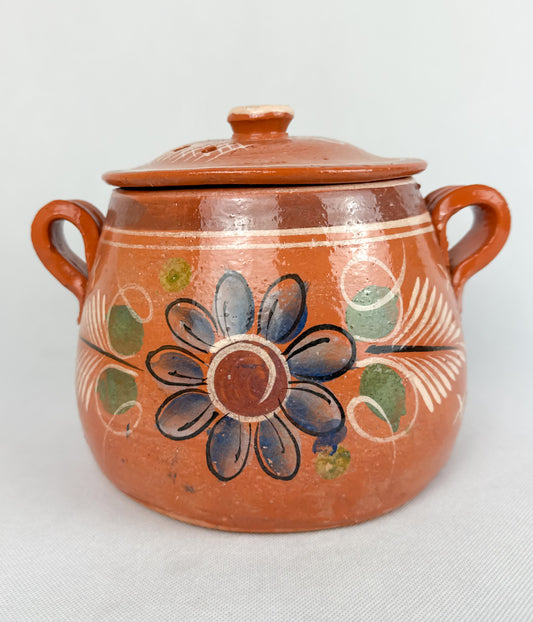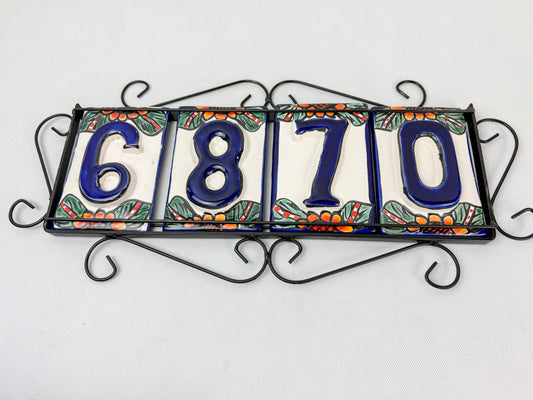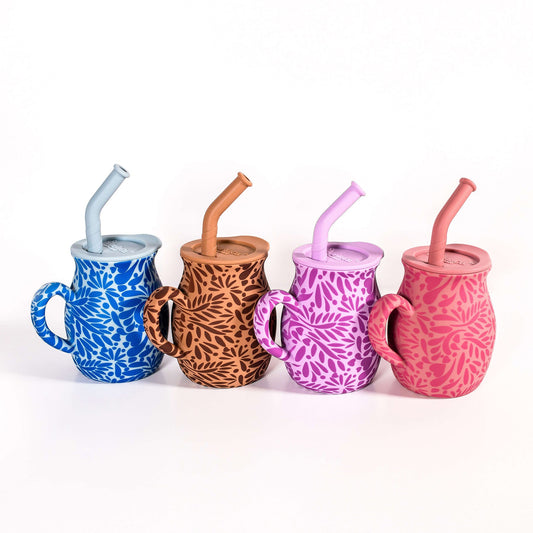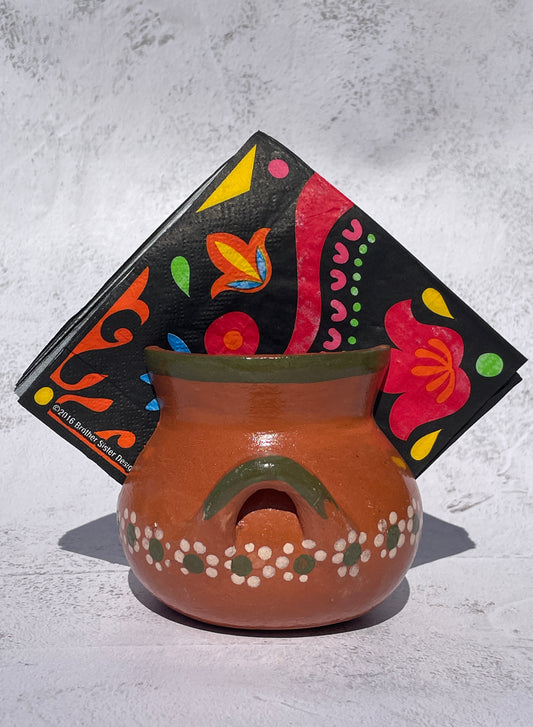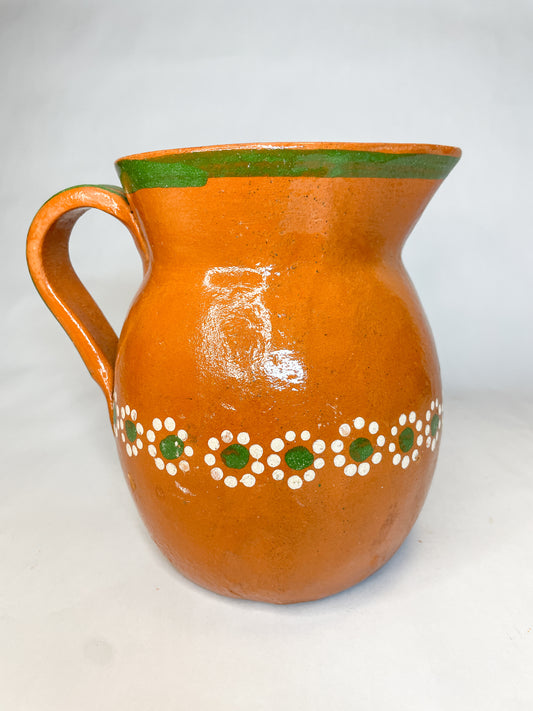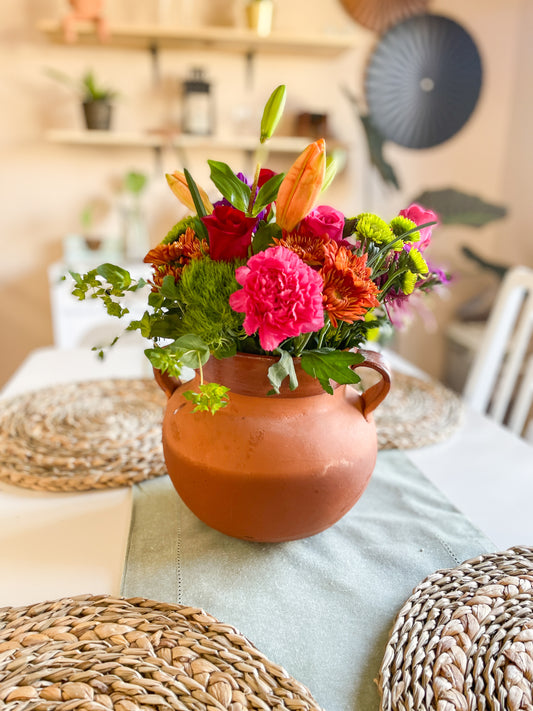If you're a fan of authentic Mexican cuisine, you're probably familiar with the molcajete, a traditional Mexican mortar and pestle used for grinding spices and making salsas and guacamole. While molcajetes are beautiful and functional kitchen tools, they require a bit of preparation before you can use them. In this blog post, we'll explore why you should cure your molcajete and the steps on how to do it.
What is molcajete?
A traditional molcajete is a Mexican kitchen tool used for grinding, crushing, and mixing ingredients.
The term "molcajete" comes from the Nahuatl language, spoken by the Aztecs, and means "mortar made from stone." Molcajetes have been used in Mexican kitchens for centuries, and they are an important part of traditional Mexican cuisine.
Molcajetes are commonly used to grind and mix spices, herbs, and other ingredients for making sauces, salsas, guacamole, and other traditional Mexican food. The rough surface of the mortar helps to release the flavors and aromas of the ingredients and provides a consistent texture to the mixture.
What is an Authentic molcajete made of?
An authentic molcajete is traditionally made of volcanic rock, typically basalt, which is a type of igneous rock formed from solidified lava. Basalt is a dense, dark-colored rock that is prized for its durability and heat resistance, which makes it ideal for use in a mortar and pestle.
The volcanic rock used to make molcajetes is usually quarried from volcanic deposits in central Mexico, where the tradition of making molcajetes has been practiced for centuries. The rock is then carved and shaped by hand using traditional tools and techniques to create a rough, porous surface in the basin of the mortar, which allows for efficient grinding and crushing of spices, herbs, and other ingredients.
Traditional molcajetes are typically made by hand using traditional tools and techniques, and the rough, porous surface of the mortar is created by chiseling and shaping the volcanic rock. The surface of the mortar is left unpolished, which gives it a rustic, natural look and feel.
Why Season Your Mexican Molcajete?
Molcajetes are made from volcanic rock, which is porous and can absorb the flavors and aromas of whatever is ground in it. This means that if you use your molcajete without curing it first when its brand new, your recipes may taste like soap or other unpleasant flavors. Curing your molcajete not only removes any impurities and debris from the manufacturing process but also prepares it to deliver for the first time the authentic and delicious flavors you crave in your Mexican dishes.
Curing your molcajete is a straightforward process that involves just a few simple steps. Here's how to do it:
Step 1: Clean your molcajete thoroughly



Before curing your molcajete, you need to make sure it's clean. Wash it with warm water and soap, scrubbing it with a stiff-bristled brush to remove any debris or dust.
Step 2: Grind raw rice in the molcajete

Place a handful of raw rice in the molcajete and use the pestle to ground rice. This helps to remove any debris or dust that may still be clinging to the surface of the stone.
Step 3: Rinse the molcajete

Rinse the molcajete thoroughly with warm water to remove any remaining rice powder.
Step 4: Grind garlic and rock salt in the molcajete

Place a few cloves of garlic and a tablespoon of salt in the molcajete and grind them together into a paste. This helps to season the molcajete and prepare it for future use.
Step 5: Rinse and dry the molcajete

Rinse the molcajete thoroughly with warm water to remove any garlic and salt residue. Dry it with a clean towel or let it air-dry.
Step 6: Repeat the process
You may need to repeat this process a few times until the water runs clear when you rinse the molcajete. Once the water runs clear, your molcajete is ready to use.
In conclusion, if you want to get the most out of your molcajete and enjoy authentic Mexican flavors in your cooking, it's essential to cure it properly before use. By following these simple steps, you'll be able to prepare your molcajete for a lifetime of delicious salsas, guacamoles, and spice blends.
How many times do you have to cure a molcajete?
In general, it is recommended to repeat the curing process from one to three times to ensure that the molcajete is properly seasoned and ready for use. After curing, the molcajete should be washed with hot water and a mild detergent, then rinsed thoroughly and allowed to air dry completely between uses.
Why use rice to cure molcajate?
Rice is a soft grain that is gentle on the surface of the molcajete, so it won't scratch or damage the stone. The grinding action of the rice also helps to reduce the porosity of the stone, which can help to prevent the molcajete from absorbing flavors or odors from the ingredients that are ground in it.
Overall, using rice to cure a molcajete is a traditional and effective method that helps to ensure that the molcajete is clean, smooth, and ready for use.
How can you tell a fake molcajete?
It can be difficult to tell a fake molcajete from a real one, especially if you are not familiar with the characteristics of authentic molcajetes. Here are a few things to look for that can help you determine whether a molcajete is genuine:
-
Material: Authentic molcajetes are made from volcanic rock, typically basalt. Look for a rough, porous surface with small holes or pits that are natural to the rock. If the molcajete is smooth and uniform, it may be made from a synthetic material or molded from concrete.
-
Weight: Molcajetes are heavy, typically weighing between 8-12 pounds. If the molcajete feels lightweight or hollow, it may be a fake.
-
Shape: Authentic molcajetes have a bowl-shaped basin with a rough surface, and a pestle with a cylindrical or club-shaped grinding end. If the molcajete has a flat or concave surface, or if the pestle has a pointed or rounded end, it may be a fake.
-
Price: Authentic molcajetes are handmade and labor-intensive to produce, so they can be expensive. If the price of the molcajete seems too good to be true, it may be a fake.
-
Brand: Look for reputable brands or sellers who specialize in authentic Mexican cookware. If the molcajete is sold by a seller who does not specialize in Mexican cookware or who has no information about the molcajete's origin or production process, it may be a fake.
Overall, the best way to ensure that you are purchasing an authentic molcajete is to buy from a reputable seller like Ibarra Imports who specializes in Authentic Mexican pottery, all of our molcajetes are made of real volcanic stone from artisans of the region.



